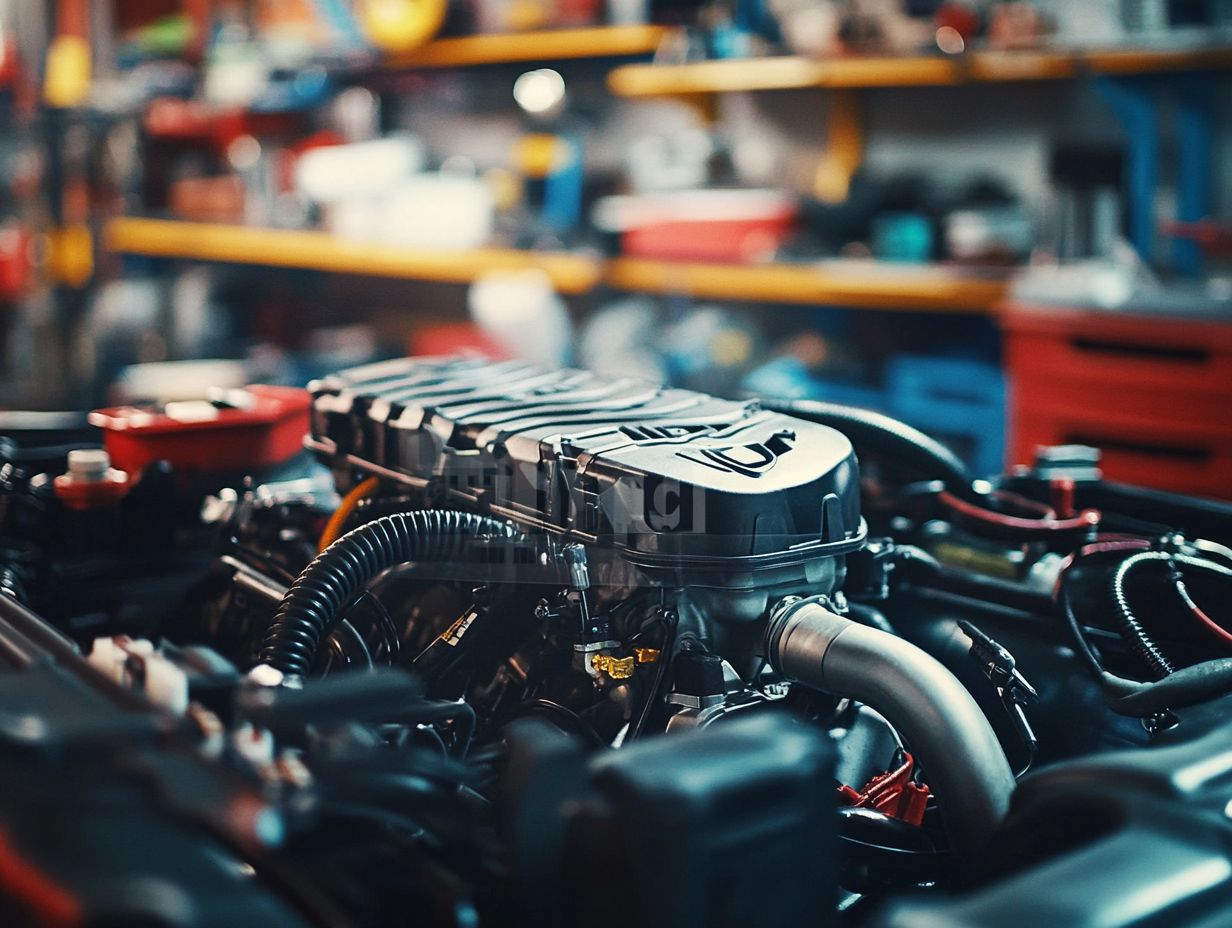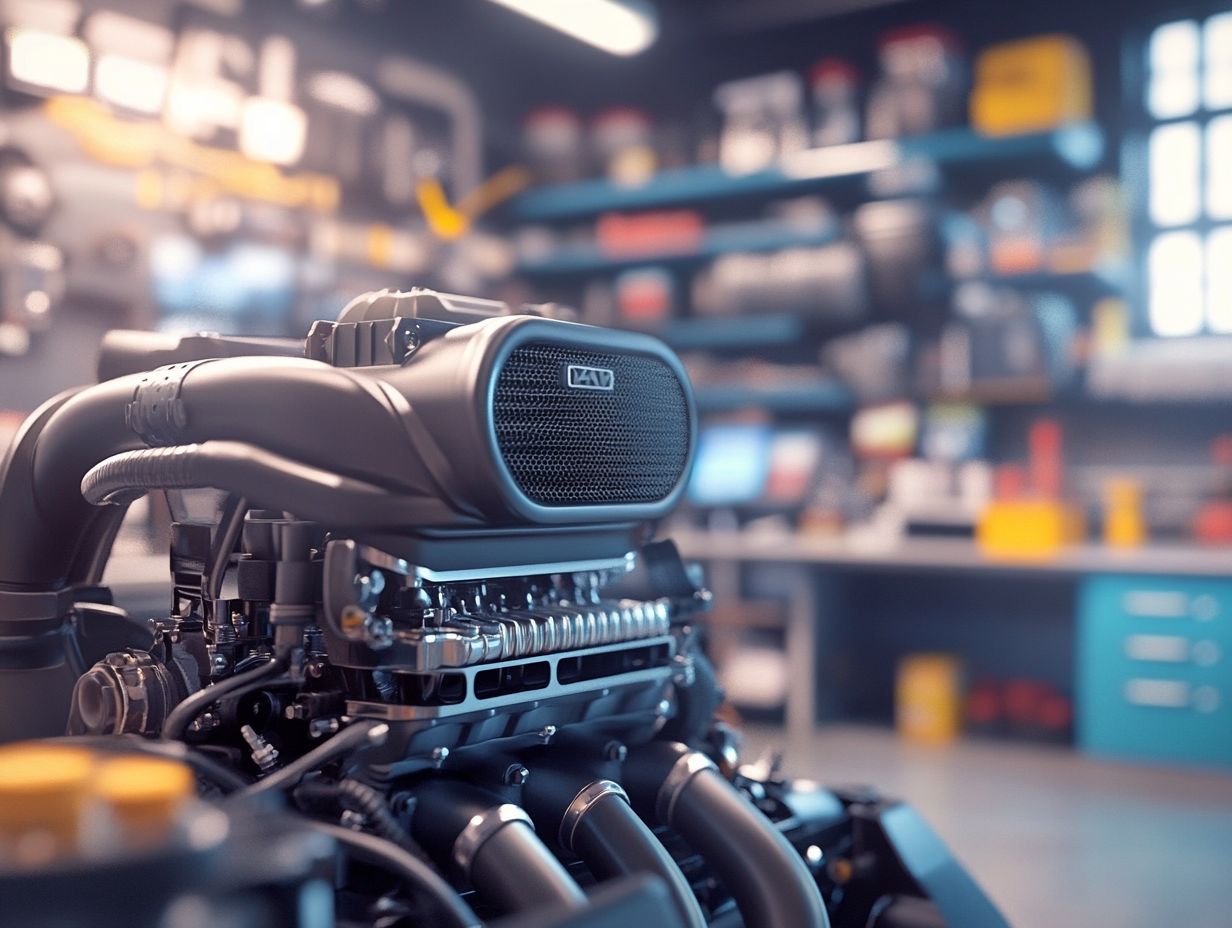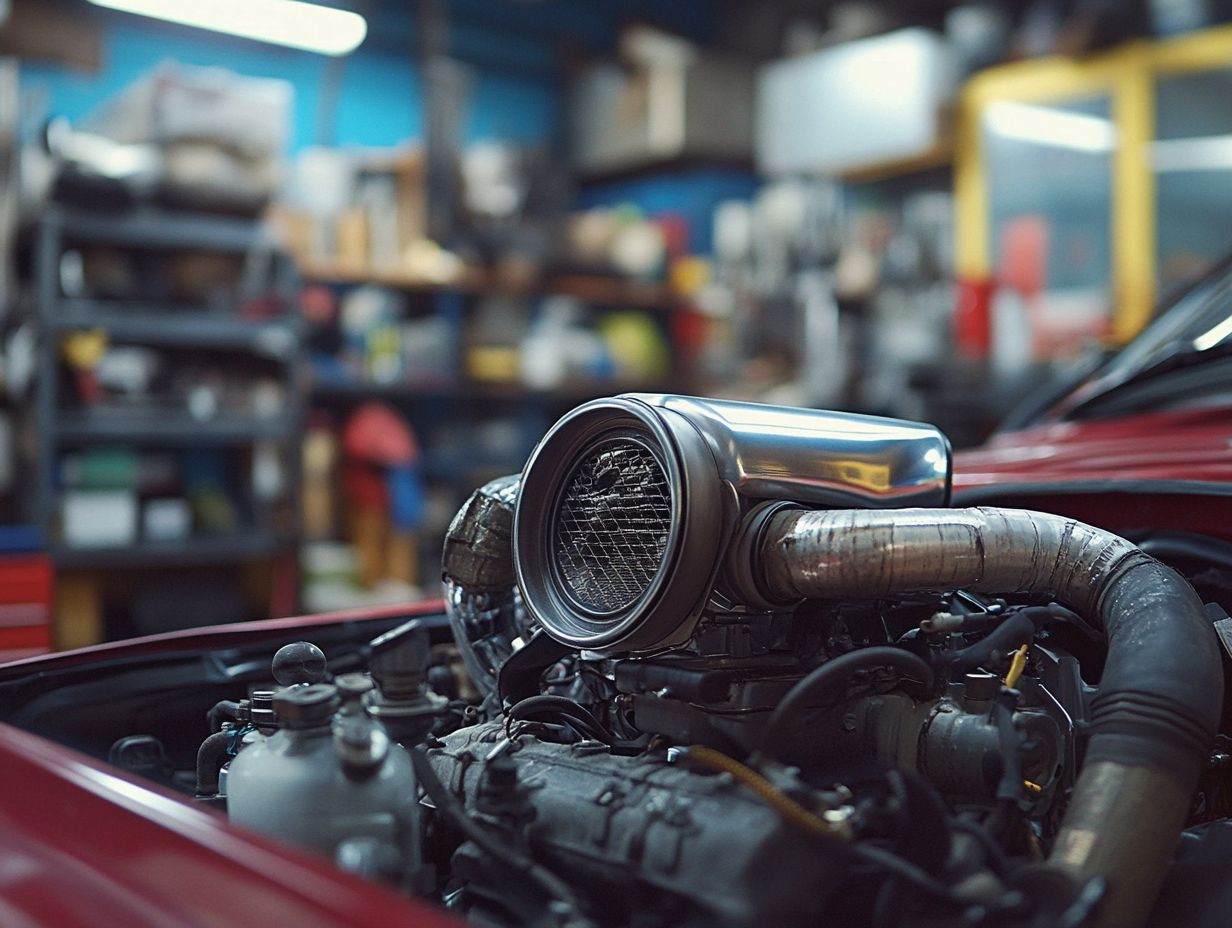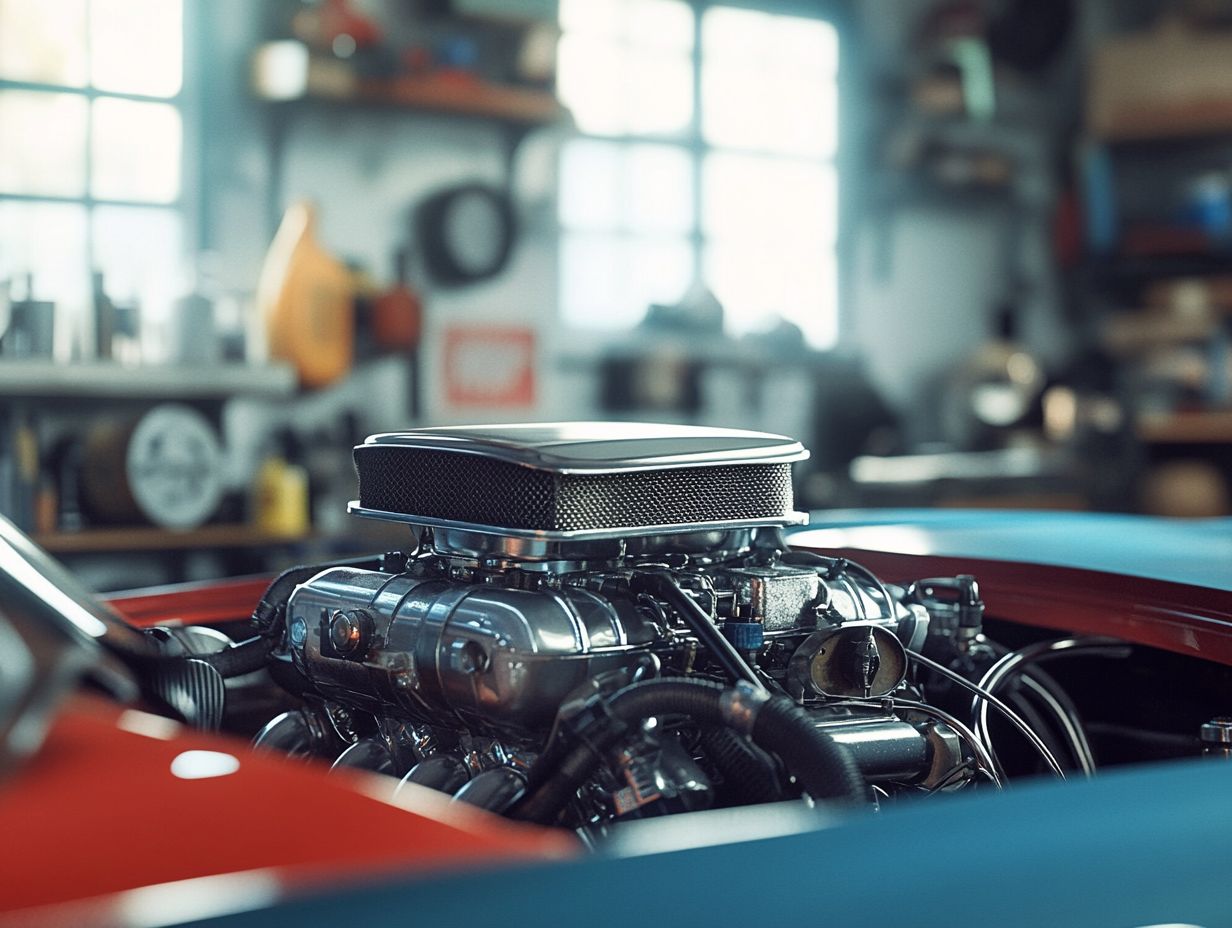Do Cold Air intakes Increase MPG? Are They Worth It Or Not?
Cold air intakes have been making waves among car enthusiasts and everyday drivers alike. They’re often hailed as an easy modification that could give a boost to fuel efficiency.
But do they really hold up to the hype?
I’m diving into what cold air intakes actually are, how they claim to improve miles per gallon, and what the real-world results of these claims look like.
I’ll also take a closer look at the factors that influence fuel efficiency, weigh the costs against the potential savings, and explore some alternative methods to enhance MPG.
Let’s find out together if cold air intakes are really worth the investment.
Understanding Cold Air Intakes

Understanding cold air intakes is all about discovering how these aftermarket parts can really amp up my vehicle’s performance by improving engine airflow, which in turn impacts horsepower and torque. I’ve noticed that many car enthusiasts love cold air intakes as a go-to modification, and they often rave about how these upgrades not only boost performance but also help with fuel efficiency.
The idea is simple: by letting in more cold air, I can enhance combustion efficiency, optimize throttle response, and even keep the engine temperature down. So, let’s dive into how a cold air intake can be an essential upgrade for anyone looking to tune their vehicle effectively.
What is a Cold Air Intake?
A cold air intake (CAI) is one of those sweet aftermarket upgrades I love to talk about. It replaces the factory air intake system and helps my engine get better airflow and density, which can lead to some serious performance gains.
Usually, it consists of a bigger, smoother air duct, a high-flow air filter, and sometimes an aftermarket housing that keeps it cooler. By pulling in that cooler air from outside the engine bay, it really boosts airflow, which is super important for combustion efficiency. When my engine gets denser, oxygen-rich air, it burns fuel better, and I can feel that increase in horsepower and torque.
I’ve noticed that enthusiasts often go for this mod not just for the performance boost but also for the more aggressive sound that comes with it. It definitely makes the whole driving experience way more exhilarating!
How Cold Air Intakes Claim to Increase MPG
I’ve noticed that cold air intakes are often promoted with some pretty bold claims about boosting MPG and enhancing fuel efficiency. It definitely makes me wonder if these aftermarket modifications are really worth it.
The idea is that by improving the air-to-fuel ratio, a cold air intake can optimize combustion, which should lead to better fuel consumption and a nice little bump in performance.
Explanation of Fuel Efficiency Claims
The claims about fuel efficiency with cold air intakes really revolve around how they boost combustion efficiency, which can lead to better miles per gallon (MPG) when driving conditions are just right.
When I drive more aggressively or cruise at nice, steady highway speeds, I really notice the perks of improved airflow from these systems. That cooler air coming in helps mix better with the fuel, allowing my engine to burn the air-fuel mixture more completely. This optimized combustion doesn’t just crank up the power; it also helps hit those performance benchmarks that we all aim for.
So, if I want to maximize the efficiency gains from cold air intakes, I’ve got to consider my usual driving conditions—whether I’m stuck in city traffic or flying down the open road.
Real World Results of Cold Air Intakes on MPG

I’ve noticed that while manufacturers love to brag about the benefits of cold air intakes, the real-world results can be a mixed bag. That’s why I often find myself diving into performance testing and checking out consumer reviews to get a clearer picture of how they truly affect MPG and performance gains.
Studies and Tests on MPG Improvement
I’ve come across a ton of studies and performance tests that dive into how much cold air intakes can improve MPG compared to stock intake systems. The results really vary across different vehicles, which is kind of interesting.
Some vehicles see a pretty impressive boost in fuel efficiency, while others only notice a small improvement. Plus, when I’ve looked at competitor products, it’s clear that not all aftermarket options deliver the same level of enhancement. Some designs really make a noticeable difference in performance.
It’s also worth mentioning that many users have reported a nice increase in horsepower along with better MPG, which is a win-win in my book. But it’s super important to keep in mind that these results can change based on engine type, driving conditions, and any modifications made to the vehicle. So, when I’m considering whether to upgrade to a cold air intake, I definitely take those factors into account.
Factors That Affect MPG
I’ve noticed that several factors can impact MPG, like driving conditions, fuel consumption habits, and how well the vehicle performs. This can make it tricky to pin any improvements directly on modifications, such as adding a cold air intake.
Other Variables That Impact Fuel Efficiency
There are plenty of factors that affect fuel efficiency beyond just a cold air intake. Things like the engine management system, regular maintenance, and how I drive all play crucial roles in emissions and fuel consumption.
For instance, having a well-tuned engine management system is key. It helps optimize the air-fuel mixture for performance, which directly influences how efficiently my vehicle runs. If I skip regular maintenance tasks—like oil changes and air filter replacements—I can end up with decreased mileage and cranked-up emissions.
Also, my driving style has a huge impact. How I accelerate, brake, and maintain speed can make a big difference in fuel efficiency. Smooth driving habits, like gentle acceleration and braking, usually lead to better MPG. On the flip side, aggressive driving can really strain the engine and waste fuel.
All these factors show just how interconnected engine performance and environmental responsibility really are.
Cost vs. Benefit Analysis of Cold Air Intakes

When I think about getting a cold air intake, I usually end up doing a little cost-benefit analysis. I weigh the installation costs against the potential long-term savings and any aftermarket perks I might get.
Financial Considerations and Long-Term Savings
When I think about cold air intakes, I can’t help but consider the financial side. There’s the upfront cost of those aftermarket parts, but then there’s also the potential for long-term savings through better fuel efficiency and performance boosts.
I’ve noticed that these components can really up my engine’s performance, which means fewer trips to the gas station—especially useful for those of us who do a lot of driving or cover long distances. It’s also important to keep in mind that warranty options can vary quite a bit between manufacturers, so I make sure to understand the different policies before I dive in.
While some aftermarket parts might void certain warranties, there are others that fit right in with the existing systems, ensuring everything runs smoothly over time. In the end, when I weigh all these factors, it becomes clear that investing in a cold air intake could really enhance my driving experience and lead to some nice savings throughout my vehicle’s lifespan.
Alternatives to Cold Air Intakes for Improving MPG
I know cold air intakes are super popular with car enthusiasts, but I’ve found there are plenty of alternatives for boosting MPG and fuel efficiency.
These options can offer some serious benefits without needing a bunch of extensive aftermarket modifications.
Other Modifications and Practices for Better Fuel Efficiency
I’ve found that there are plenty of tweaks and practices I can use to boost fuel efficiency without having to install a cold air intake.
For starters, adopting smoother driving habits—like gradually accelerating and decelerating—can really make a noticeable difference in my vehicle’s fuel consumption. Keeping up with regular engine diagnostics is also key; it helps me spot any issues that might be dragging down performance. Staying on top of oil changes and swapping out air filters is a must.
Plus, making sure my tires are properly inflated and aligned not only keeps me safer on the road but also kicks my mileage up a notch. When I put all these vehicle modifications and mindful driving behaviors together, it creates a solid game plan for maximizing fuel efficiency.
Frequently Asked Questions

Do Cold Air Intakes Increase MPG?
Yes, cold air intakes can increase MPG. By allowing more oxygen into the engine, the fuel is burned more efficiently, resulting in improved fuel economy.
How do cold air intakes improve MPG?
Cold air intakes improve MPG by reducing the amount of work the engine has to do to draw in air. This leads to more efficient combustion and better fuel economy.
Are cold air intakes worth the investment?
It depends on your individual needs and preferences. While they can increase MPG, the cost and installation may not be worth it for some drivers.
Do all cars benefit from cold air intakes?
No, not all cars will see an increase in MPG with cold air intakes. Some vehicles may already have efficient air intake systems and may not see a noticeable difference.
Are cold air intakes legal?
Yes, most cold air intakes are legal as long as they are CARB (California Air Resources Board) approved. However, it’s always best to check with your local laws and regulations.
Can cold air intakes harm my car’s engine?
In most cases, no. As long as the cold air intake is installed properly and is designed for your specific vehicle, it should not cause any harm to your engine. However, improper installation or using an incorrect intake for your car could potentially cause damage.
